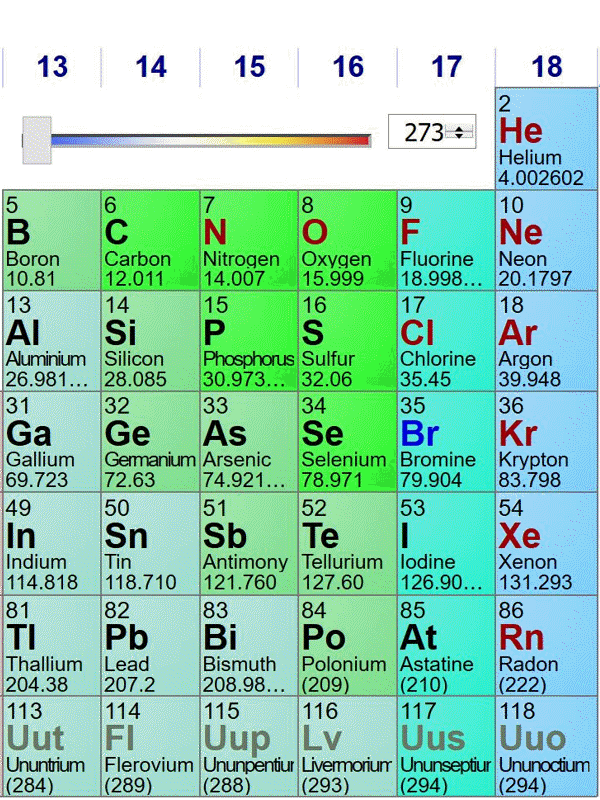The definition of a kilogram has recently been changed. What effect, if any, will this change have on data on the periodic table?
Answer
Molar masses
The molar mass of the carbon-12 isotope used to be 12 g/mol exactly (by definition). Now, it is experimentally determined, with the current value $\pu{11.9999999958(36) g mol-1}$ (CODATA 2018). So the molar mass of carbon-12 changed. The standard atomic weights (relative atomic masses) shown in the periodic table are not affected by this. However, atomic weights (dimension one) are no longer exactly equal to molar mass divided by 1 g/mol. Instead, they differ by a tiny bit (you would need 9 or 10 significant digits to see the difference).
No visible changes
Here is an animated gif of a portion of the periodic table at ptable.com over the past four years (Jan 23rd 2016, Jan 10th 2017,Jan 6th 2018, May 2nd 2019). Nothing much has changed near carbon:
The standard atomic weights change a bit each year, as better estimates of the isotope compositions of elements with multiple stable isotopes are made. Also, the publishers of this specific periodic table decided to truncate atomic weights to 5 significant figures in 2018. The biggest change occurred when elements in period 7 were discovered and named.
The last image is from May 2nd 2019, before the change of the kilogram (and mole) definition. On May 29th 2019, the data shown at ptable.com is identical.

No comments:
Post a Comment